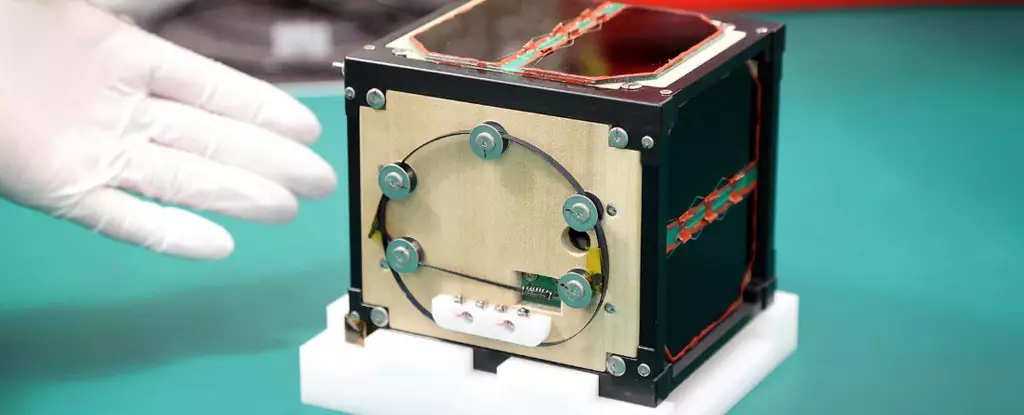In a groundbreaking development for space research, the world has witnessed the successful launch of the first wooden satellite, LignoSat, aboard a SpaceX rocket. Developed by a team of scientists at Kyoto University, this innovative experiment marks a significant step toward exploring sustainable materials for satellites, which traditionally rely on metals that pose environmental risks upon re-entry. The launch is part of a supply mission aimed at the International Space Station (ISS), with expectations set high for this experiment’s implications on future satellite design and technology.
Satellites have become essential tools for modern communication, weather forecasting, and scientific research. However, as these metal devices return to Earth’s atmosphere post-mission, they frequently break apart, creating metal particles that may harm both the environment and communication systems. The Kyoto University team’s initiative to use wooden materials represents a proactive approach to mitigating these potential hazards. By designing a satellite that is expected to burn up entirely upon re-entry, LignoSat could serve as a model for future satellites that minimize ecological implications.
Weighing just a few kilograms, LignoSat is a compact cube with dimensions of 10 centimeters on each side. Its launch from NASA’s Kennedy Space Center in Florida was executed flawlessly, according to the Human Spaceology Center at Kyoto University. The deployment within a specialized container crafted by the Japan Aerospace Exploration Agency (JAXA) confirmed its safe passage into orbit. The next phase involves the satellite’s release into outer space, slated for approximately one month after its arrival at the ISS.
LignoSat is not merely a feat of engineering; it is designed to gather crucial data for future satellite endeavors. Researchers aim to monitor the satellite’s performance in the harsh conditions of space, particularly its resilience against extreme temperature fluctuations. This information will be vital in assessing whether wooden materials possess the durability necessary for long-term space missions. This exploratory venture holds the potential to revolutionize current satellite technology, prompting further investment in alternative materials.
The vision of astronauts and researchers like Takao Doi reflects a broader ambition within the scientific community—to move beyond traditional materials and embrace the innovations offered by newer, sustainable options. Doi’s assertion that “satellites that are not made of metal should become mainstream” encapsulates a growing consciousness about the intersection of technology and environmental stewardship. Should the LignoSat yield positive results during its mission, it could inspire a wave of similar initiatives across the aerospace sector.
The successful launch of LignoSat represents not only an achievement in satellite engineering but also a crucial step toward reducing the environmental impact of space exploration. As we look to the skies and dream of future missions beyond our planet, the integration of sustainable technologies will be indispensable. The insights gained from this wooden satellite could very well lead to the next generation of more environmentally conscious space technology, forever changing our approach to how we explore and utilize space.


Leave a Reply